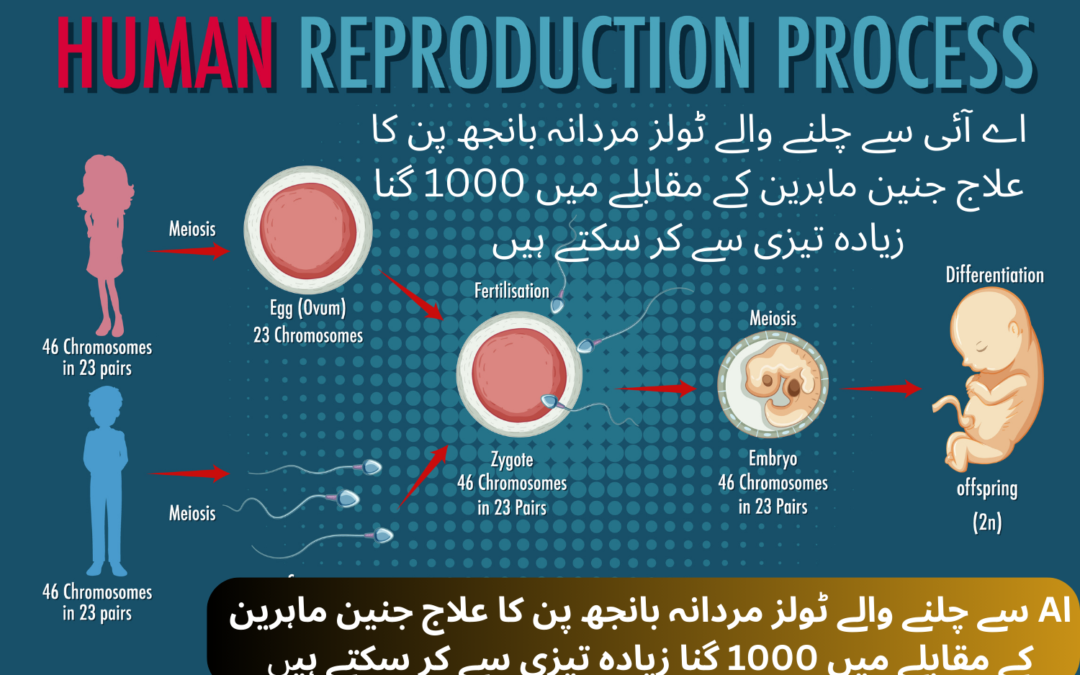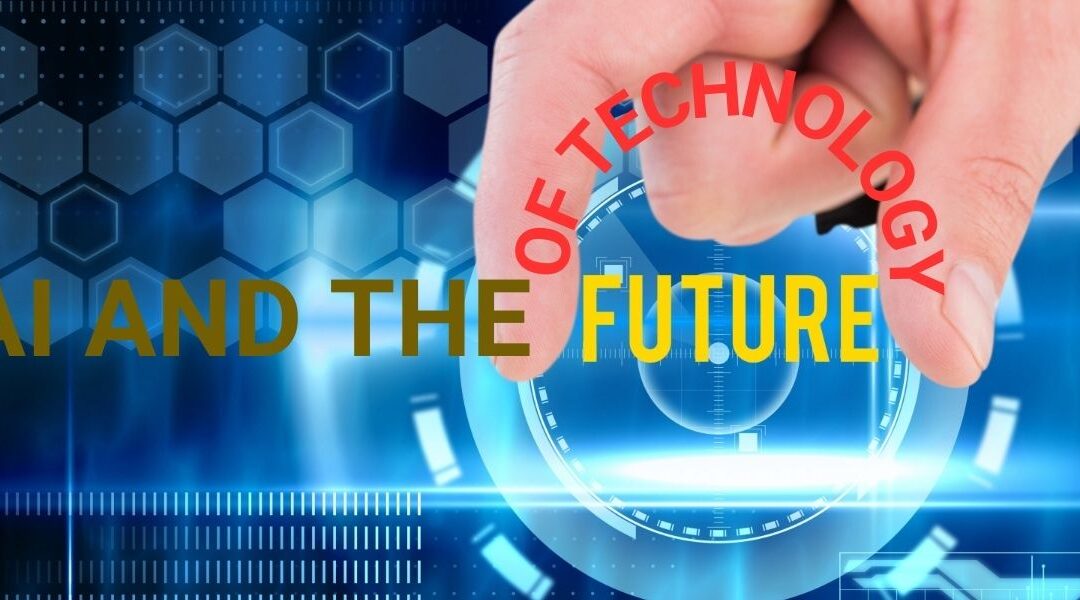
by admin | Sep 16, 2023 | AI, male infertility
Introduction
Male infertility is a pressing issue that affects countless couples worldwide. For many, the path to parenthood is fraught with challenges, often requiring extensive fertility treatments. However, the emergence of AI-powered tools in the field of reproductive medicine has given new hope to couples struggling with male infertility. In this article, we will explore how AI-powered tools can potentially treat male infertility at an astonishing speed, surpassing the capabilities of even the most experienced embryologists.
The Burden of Male Infertility
Male infertility is a condition that arises when a man’s reproductive system faces challenges in producing healthy, motile sperm or when there are blockages that hinder sperm delivery. It is a common issue, affecting approximately 7% of men globally. For couples trying to conceive, male infertility can be emotionally and physically taxing.
The Promise of AI in Healthcare
Artificial Intelligence (AI) has made significant strides in healthcare across various domains, and reproductive medicine is no exception. AI’s ability to process vast amounts of data and perform complex tasks at incredible speeds has opened up new possibilities for infertility treatment.
AI-powered tools are being developed to assist and augment the work of fertility specialists and embryologists. These tools encompass a range of applications:
1. Sperm Analysis
AI can analyze sperm samples with unparalleled speed and precision. Traditional manual analysis by embryologists is time-consuming and subject to human error. AI algorithms can evaluate sperm motility, morphology, and concentration in a matter of seconds, providing invaluable insights for treatment decisions.
2. Embryo Selection
In in vitro fertilization (IVF) procedures, selecting the healthiest embryos is critical for success. AI algorithms can assess embryos and predict which ones are most likely to result in a successful pregnancy. This process, which could take embryologists hours, can be accomplished in a fraction of the time with AI.
3. Personalized Treatment Plans
AI can create personalized treatment plans by analyzing patient data, including medical history, genetics, and lifestyle factors. These tailored plans optimize the chances of success, reducing the need for trial-and-error approaches.
AI vs. Embryologists: The Speed Factor
The most remarkable aspect of AI-powered tools is their speed. They can process and analyze data up to 1000 times faster than a human embryologist. This acceleration not only reduces the waiting time for couples but also minimizes the stress and uncertainty associated with infertility treatments.
Ethical Considerations and Regulatory Oversight
While the potential of AI in male infertility treatment is promising, it’s essential to consider ethical and regulatory aspects. Ensuring patient privacy, maintaining data security, and adhering to medical guidelines are paramount in the development and deployment of AI-powered tools.
The Future of Male Infertility Treatment
AI-powered tools have the potential to revolutionize male infertility treatment, offering hope to couples who have long struggled to conceive. As AI continues to evolve and researchers refine these tools, the future looks promising for those on the path to parenthood.
Conclusion
AI-powered tools represent a beacon of hope for individuals and couples facing the challenges of male infertility. Their ability to expedite the treatment process, provide accurate analysis, and offer personalized care is a testament to the incredible advancements in the field of reproductive medicine. While AI can’t replace the expertise and compassion of healthcare professionals, it can certainly complement their efforts, ultimately bringing the dream of parenthood within closer reach for many. As research in this area continues to advance, the future of male infertility treatment is brighter than ever.

by admin | Aug 26, 2023 | Russia, Technology
Russia’s Advancements in Developing a Homegrown Versatile Biological System Inspired by Android
- Introduction
- Overview of Russia’s Biological System Development
- The connection between Android and Biological Systems
- Keyphrases and SEO Tools
- Importance of SEO-friendly Content
- Utilizing Yoast SEO Software for Optimization
- Russia’s Homegrown Biological System
- Evolution of Biological Engineering in Russia
- Objectives and Scope of the Project
- Inspiration from Android Technology
- Parallels between Android and Biological Systems
- Leveraging Android’s Adaptability for Biological Applications
- Technical Aspects of the Project
- Genetic Modification and Editing Techniques
- Integration of Sensors and Feedback Mechanisms
- Benefits and Applications
- Medical Advancements and Healthcare Innovations
- Environmental Monitoring and Biodiversity Conservation
- Challenges and Ethical Considerations
- Biosecurity and Potential Risks
- Ethical Implications of Synthetic Biology
- Collaborations and International Response
- International Scientific Collaborations
- Global Reaction to Russia’s Bioengineering Endeavors
- Future Prospects and Impact
- Potential Transformative Effects on Biotechnology
- Shaping Russia’s Position in the Global Bioengineering Landscape
- Conclusion
- Recap of Achievements and Milestones
- Balancing Innovation with Responsibility in Biological Advancements
1. Introduction:
Russia’s scientific landscape has witnessed a remarkable stride in recent years as it delves into the realm of biological engineering with an innovative twist. Drawing inspiration from the world of technology, particularly Android systems, Russia has embarked on a groundbreaking journey to create a versatile and adaptable homegrown biological system. This report explores the confluence of biology and technology, analyzing how Russia’s advances in this field are shaping the future.
2. Keyphrases and SEO Tools:
In the era of digital information dissemination, SEO-friendly content plays a pivotal role in ensuring that valuable information reaches the intended audience. Leveraging tools such as the Yoast SEO software allows content creators to optimize their material for search engines, enhancing its visibility and accessibility.
3. Russia’s Homegrown Biological System:
Russia’s strides in biological engineering have evolved over the years, with a keen focus on developing a homegrown versatile biological system. The project’s primary objectives include revolutionizing medical treatments, enhancing environmental monitoring, and fostering innovation in synthetic biology. The project’s scope extends to multidisciplinary collaborations, drawing experts from genetics, bioinformatics, and computer science.
4. Inspiration from Android Technology:
An intriguing parallel emerges between the adaptability of Android systems and the potential of biological systems. The adaptability, feedback mechanisms, and scalability inherent in Android’s design have inspired researchers to explore similar attributes in biological contexts. By harnessing the versatility of Android, Russia aims to develop a biological system that can dynamically respond to changing environmental factors.
5. Technical Aspects of the Project:
Russia’s endeavor involves employing cutting-edge genetic modification techniques to engineer biological entities capable of autonomous adaptation. Additionally, the integration of sensors and feedback mechanisms draws inspiration from Android’s sensory technology, enabling real-time data acquisition and analysis within the biological system.
6. Benefits and Applications:
The implications of Russia’s work are far-reaching. In the medical field, this technology could pave the way for personalized treatments, drug delivery systems, and regenerative medicine breakthroughs. Moreover, the integration of biological systems with environmental monitoring could aid in biodiversity conservation and pollution control.
7. Challenges and Ethical Considerations:
As with any pioneering endeavor, challenges arise. Ensuring biosecurity and managing potential risks associated with genetically modified organisms is of paramount importance. Ethical considerations also come to the fore, requiring careful navigation of the ethical implications surrounding synthetic biology and genetic manipulation.
8. Collaborations and International Response:
The project has sparked interest globally, leading to collaborative efforts between Russian researchers and international experts. The international response has been a mix of curiosity and caution, with discussions centered on regulatory frameworks, information sharing, and responsible innovation.
9. Future Prospects and Impact:
The successful realization of Russia’s homegrown versatile biological system could reshape the biotechnology landscape on a global scale. It has the potential to set new benchmarks for innovation, foster interdisciplinary collaborations, and position Russia as a frontrunner in the field of bioengineering.
10. Conclusion:
Innovation often walks a fine line between progress and responsibility. Russia’s strides in developing a homegrown versatile biological system demonstrate the harmonious convergence of biology and technology. As this journey unfolds, it is crucial to strike a balance between pushing the boundaries of scientific advancement and safeguarding ethical considerations, ensuring that the path forward is one of responsible innovation.

by admin | Aug 25, 2023 | AI, Technology
AI and the Future of Technology: Unveiling Possibilities and Challenges
Introduction
In the rapidly evolving landscape of technology, Artificial Intelligence (AI) stands out as a transformative force that promises to revolutionize industries, reshape economies, and redefine the way we live and work. With its unprecedented ability to mimic human intelligence and perform complex tasks, AI has emerged as a catalyst for innovation, raising questions about the future of technology and its impact on various aspects of our lives. In this blog post, we will delve into the intricate relationship between AI and the future of technology, exploring its potential, challenges, and the path forward.
AI’s Role in Shaping the Future
AI has already made significant strides in various domains, from healthcare and finance to transportation and entertainment. As machines become more adept at processing and analyzing massive amounts of data, they enable us to make more informed decisions, automate tasks, and uncover insights that were previously hidden. Let’s explore some key areas where AI is poised to shape the future:
- Automation and Efficiency: AI-driven automation is reshaping industries by streamlining processes and increasing efficiency. From manufacturing to customer service, businesses can leverage AI-powered systems to reduce errors, enhance productivity, and optimize resource allocation.
- Healthcare Revolution: AI’s potential in healthcare is monumental, with applications ranging from disease diagnosis to drug discovery. AI algorithms can analyze medical images, predict patient outcomes, and even assist in surgery, ushering in an era of personalized medicine.
- Smart Cities and IoT: The integration of AI with the Internet of Things (IoT) is transforming urban living. Smart cities use AI to manage traffic, conserve energy, and enhance public services, ultimately improving the quality of life for residents.
- Economic Growth: As AI-powered technologies proliferate, they create new economic opportunities. AI-driven startups and innovations have the potential to drive economic growth by generating jobs and fostering entrepreneurship.
Challenges and Considerations
While the prospects of AI are exciting, they are not without challenges. Addressing these challenges is crucial to ensure that the future of technology is beneficial and ethical:
- Ethical Concerns: AI raises ethical questions around privacy, bias, and accountability. Ensuring that AI systems are transparent, and unbiased, and respect individual rights is essential.
- Job Displacement: The automation potential of AI has led to concerns about job displacement. As machines take over routine tasks, the workforce needs to adapt and acquire new skills to remain relevant.
- Security Risks: With increased reliance on AI comes the risk of cyberattacks and breaches. AI can be both a tool for enhancing security and a vulnerability that malicious actors may exploit.
- Regulatory Frameworks: Governments and regulatory bodies are grappling with the task of creating frameworks that balance innovation and safety. Striking the right balance is crucial to fostering AI development while mitigating risks.
The Path Forward: Collaboration and Education
To fully harness the potential of AI and ensure a positive future for technology, collaboration among various stakeholders is imperative:
- Interdisciplinary Collaboration: AI’s complexity requires collaboration between computer scientists, ethicists, policymakers, and domain experts. This interdisciplinary approach can lead to well-rounded solutions.
- Investing in Education: Preparing the workforce for an AI-driven future demands educational initiatives that promote digital literacy and reskilling. Lifelong learning will be essential to adapt to the changing technological landscape.
- Ethical AI Development: AI developers must prioritize ethical considerations at every stage of development. From data collection to algorithm design, ethical guidelines should be integrated into the process.
- Public Awareness: Raising public awareness about AI’s capabilities and limitations can foster informed discussions and help manage expectations about its impact on society.
Conclusion
The synergy between AI and the future of technology holds immense promise. As AI continues to evolve, it will likely become an indispensable tool across various industries, transforming how we live and work. However, addressing challenges related to ethics, jobs, security, and regulation is vital to ensure that AI’s potential is realized responsibly. By fostering collaboration, investing in education, and promoting ethical development, we can shape a future where AI-driven technologies enhance our lives while upholding our values. Embracing this future requires a balance between innovation and responsibility—an endeavor that will define the trajectory of our technological evolution.



